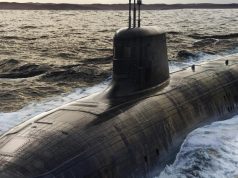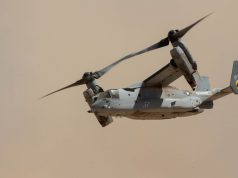The Royal Australian Navy has declared final operational capability for its two Adelaide-class landing helicopter docks (LHD).
At 230-meters long and with a speed of more than 20 knots, the 27,500 tonne ships are home-ported at Garden Island, Sydney. The ships entered service in 2014 and 2015.
Each ship has the ability to support six helicopters, and four small landing craft which are able to carry Army’s M1A1 main battle tank.
Australian defense minister Linda Reynolds said HMA Ships Adelaide and Canberra are ready to be deployed on amphibious operations such as humanitarian assistance and disaster relief, and amphibious warfare.
“The Australian Defence Force’s amphibious capability is an integral part of Australia’s strategic posture and this milestone is another step in navy’s roadmap to delivering amphibious excellence,” minister Reynolds said.
The LHDs have a stern ramp/door that provides access to the well dock for landing craft and vehicles along with a fixed ramp (steel beach) between the well dock and the heavy vehicle/cargo deck. Additionally two lateral ramp doors are located on the starboard side and provide wharf access to the heavy vehicle/cargo deck for vehicles up to 65 tons. Vehicular access between the heavy and light vehicle decks is achieved via a fixed ramp located on the port side.
The well dock is 69.3m long and 16.8m wide (1,165m2) and the LHD will normally carry four LCM 1E.
The LHD’s flight deck is 202.3m long and 32m wide, allowing the ship to operate a range of ADF rotary wing aircraft including MRH-90 Taipan, CH-47 Chinook, Blackhawk, ARH Tiger and Romeo Seahawk helicopters.
Chief of Navy, Vice Admiral Michael Noonan AO, RAN, said navy is closer to achieving a resilient, sustained and integrated navy supported by our workforce, as outlined in the Plan Pelorus strategy for 2022.
“As we transition to a more technologically advanced navy, our goal is to be capable of conducting sustained combat operations as part of a Joint Force,” Vice Admiral Noonan said.
Plan Pelorus provides direction to navy through 2022. It is revised regularly to enable delivery on five set outcomes, with the highest priority being workforce reconstitution.



























